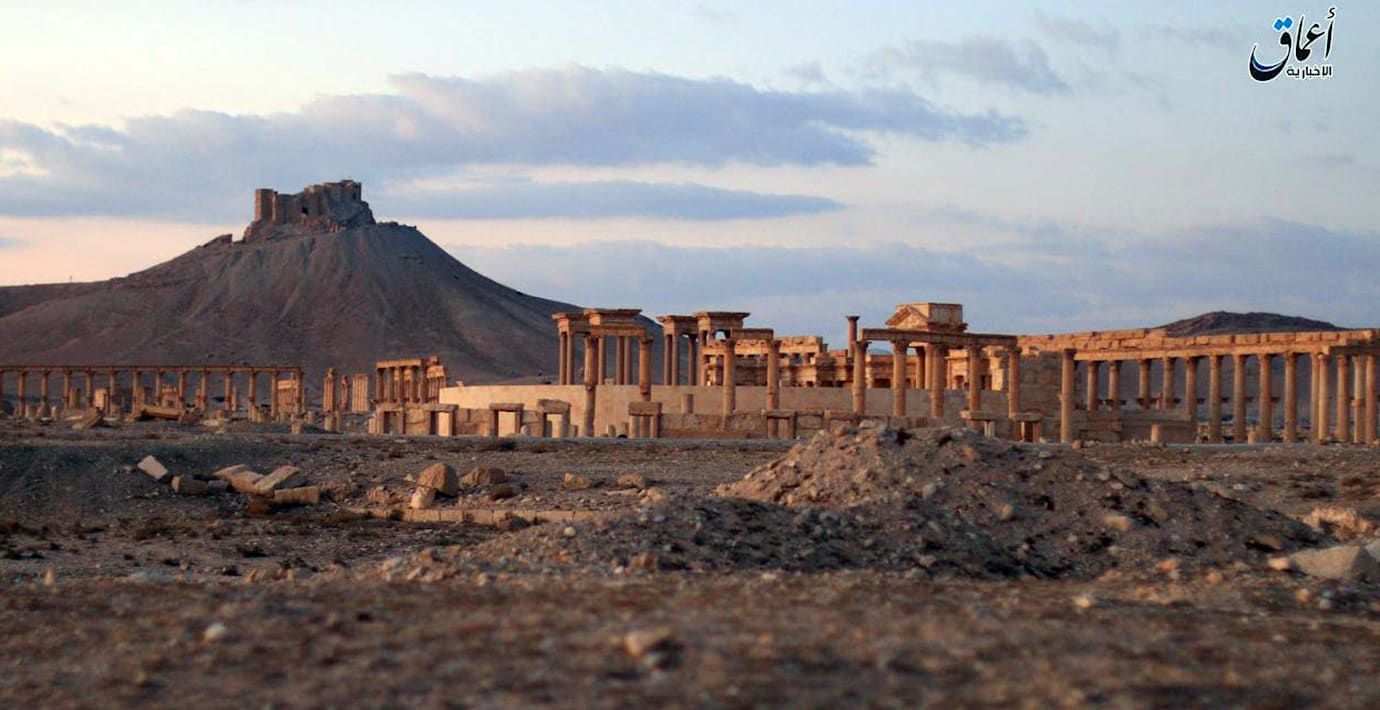
Ryssland: IS vill förstöra så mycket de kan i Palmyra
Terrorgruppen IS kan vara på väg att förstöra ytterligare monument i den historiska staden Palmyra, rapporterar CNN med hänvisning till ryska uppgifter.
Många av stadens oersättliga antikviteter, monument och historiska platser har förstörts sedan den ockuperades av IS i maj 2015. Nu avancerar syriska trupper mot staden och Rysslands försvarsdepartementet säger att de har upptäckt en ökning i lastbilsrörelser nära den historiska platsen.
”Detta tyder på att IS vill föra in sprängämnen för att förstöra de kvarvarande arkitektoniska lämningarna så mycket de kan innan de ger sig av”, skriver det ryska försvarsdepartementet i ett uttalande enligt CNN.
bakgrund
Palmyra
Wikipedia (en)
Palmyra (/ˌpɑːlˈmaɪrə/; Palmyrene: Tadmor; Arabic: تدمر Tadmor) is an ancient Semitic city in present-day Homs Governorate, Syria. Archaeological finds date back to the Neolithic period, and the city was first documented in the early second millennium BC. Palmyra changed hands on a number of occasions between different empires before becoming a subject of the Roman Empire in the first century AD.
The city grew wealthy from trade caravans; the Palmyrenes were renowned merchants who established colonies along the Silk Road and operated throughout the Roman Empire. Palmyra's wealth enabled the construction of monumental projects, such as the Great Colonnade, the Temple of Bel, and the distinctive tower tombs. The Palmyrenes were a mix of Amorites, Arameans, and Arabs. The city's social structure was tribal, and its inhabitants spoke Palmyrene (a dialect of Aramaic); Greek was used for commercial and diplomatic purposes. The culture of Palmyra was influenced by Greco-Roman culture and produced distinctive art and architecture that combined eastern and western traditions. The city's inhabitants worshiped local deities and Mesopotamian and Arab gods.
By the third century AD, Palmyra was a prosperous regional center reaching the apex of its power in the 260s, when Palmyrene King Odaenathus defeated Persian Emperor Shapur I. The king was succeeded by regent Queen Zenobia, who rebelled against Rome and established the Palmyrene Empire. In 273, Roman emperor Aurelian destroyed the city, which was later restored by Diocletian at a reduced size. The Palmyrenes converted to Christianity during the fourth century and to Islam in the centuries following the Islamic conquests, after which the Palmyrene and Greek languages were replaced by Arabic.
Before 273 AD, Palmyra enjoyed autonomy and was attached to the Roman province of Syria, having its political organization influenced by the Greek city-state model during the first two centuries AD. The city became a Roman colonia during the third century, leading to the incorporation of Roman governing institutions, before becoming a monarchy in 260. Following its destruction in 273, Palmyra became a minor center under the Byzantines and later empires. Its destruction by the Timurids in 1400 reduced it to a small village. Under French Mandatory rule in 1932, the inhabitants were moved into the new village of Tadmur, and the ancient site became available for excavations.
In 2015, Palmyra came under the control of the Islamic State of Iraq and the Levant (ISIL), which later destroyed a number of the site's buildings. The city was retaken by the Syrian Army on 27 March 2016 but was retaken by ISIL on 11 December 2016 and further destruction of the site followed in 2017.
Palmyra
Omni är politiskt obundna och oberoende. Vi strävar efter att ge fler perspektiv på nyheterna. Har du frågor eller synpunkter kring vår rapportering? Kontakta redaktionen



